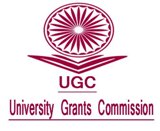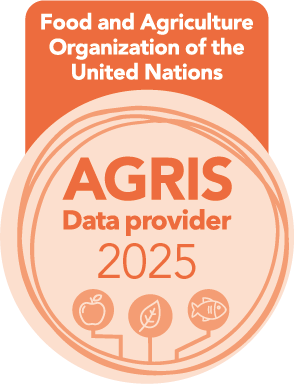Determinants of Rural Women’s Participation in Agricultural Extension Services: Case of Irrigable Vegetable Production in Oromia Region, Ethiopia
DOI:
https://doi.org/10.26725/JEE.2018.3.30.6092-6099Keywords:
Rural Women’s Participation, Vegetable Cultivation, Agricultural Extension Services, EthiopiaAbstract
Women rarely participate in extension services and have little contact with extension service organizations. Increasing extension service to female farmers in rural areas of Ethiopia remains challenging. Reports say that there is low participation of women vegetable farmers in agricultural extension services in Toke-Kutayedistrict, Oromia region, Ethiopia.Therefore, this study seeks to assess the factors influencing rural women participation in agricultural extension services employing both qualitative and quantitative approaches. Out of the 132 women vegetable producers selected for this study, there were 79 participants and 53 non-participants of agricultural extension services. Quantitative data from primary sources were collected using a semi-structured interview schedule. Qualitative data were collected through key informant interviews and focus group discussions.The results of the Binary Logit regression model estimate indicate that out of the 16 explanatory variables included in the model, farming experience, sex of development agent, irrigable land holding size and access to credit shows significant and positive relation with participation whereas, time spent on domestic activities, distance from water source, mobility constraints and sex of household headship shows significant and negative relationship with women participation.References
Agbamu J.U. (2007). Essentials of Agricultural Communication in Nigeria. Malthouse Press Limited, Lagos. Retrieved from http://www.malthouselagos.com/product/essentials-of-agricultural-communication-in-nigeria/
Apantaku S.O. and Oyegunle J. O. (2016). Reports from the Field: Challenges of Agricultural Extension Agents in Ogun State Nigeria. Paper Presented at the 7th GFRAS. (Global Forum for Rural Advisory Services) Annual Meeting. 3-6 Oct. Fini Hotel, Limbe, Cameroon. Retrieved from
http://www.gfras.org/images/events/annual_meetings/2016/inputs/short_pres/Short%20Presentation%20Samson%20Apantaku.pdf
Berger M., De Lancey V. & Mellencamp A. (1984). Bridging the Gender Gap in Agricultural Extension. International Center for Research on Women. Washington D.C. Retrieved from https://www.icrw.org/wp-content/uploads/2016/10/Bridging-the-Gender-Gap-in-Agricultural-Extension.pdf
Central Statistical Agency (2008). Summary and Statistical Report of the 2007 Population and Housing Census. Addis Ababa, Ethiopia. Retrieved from
https://unstats.un.org/unsD/statcom/statcom_08_events/special%20events/population_census/docs/presentation%20at%20Stat%20Com-UN%20Samia1.pdf
Central Statistical Agency (2014). The World Fact Book. Retrieved from https://www.cia.gov/library/publications/theworld- factbook/goes/et.html
Chioma U. N. (2014). Socio-Economic Factors Influencing Farmers’ Participation in Community- Based Programme in Abia and Cross River States of Nigeria. Journal of Agricultural Extension, 18(1), 48-61. Retrieved from
http://dx.doi.org/10.4314/jae.v18i1.5
Cochran W. G. (1977). Sampling Techniques, 3rd Edition. Wiley.com: p. 448. ISBN: 978-0-471-16240-7
Cohen M. J. & Lemma M. (2011). Agricultural Extension Services and Gender Equality: An Institutional Analysis of Four Districts in Ethiopia. IFPRI Discussion Paper 01094, Development Strategy and Governance Division, IFPRI, Washington, DC. Retrieved from http://www.ifpri.org/publication/agricultural-extension-services-and-gender-equality-0
CFGB (2015). Money in the Pocket, Food on the Table: the economic case for investing in agricultural development. Winnipeg: Canadian Food Grains Bank. Retrieved from http://foodgrainsbank.ca/product/policy-brief-money-in-the-pocket-food-on-the-table/
Doss C. (2011). If women hold up half the sky, how much of the world’s food do they produce?.
ESA Working Paper No. 11-04, Agricultural Development Economics Division, The Food and Agriculture Organization of the United Nations. Retrieved from http://www.fao.org/3/a-am309e.pdf
Feder G., Just R.E. & Zilberman D. (1985). Adoption of agricultural innovations in developing countries: a survey. Econ. Dev. Cult. Change, 33 (2), 255-298. Retrieved from http://dx.doi.org/10.1086/451461
Flavia G., Josefine L. & Sophia H. (2015). Running out of time: The reduction of women’s work burden in agricultural production, Food and Agriculture Organization of the United Nations (FAO). Rome. ISBN 978-92-5-108810-4. Retrieved from http://www.fao.org/3/a-i4741e.pdf
FAO (Food and Agriculture Organization) (2010a). Ethiopia Country Brief. Retrieved from www.fao.org/countries/55528/en/eth/
FAO (Food and Agriculture Organization) (2010b). Gender dimensions of agricultural and rural employment: Differentiated pathways out of poverty: Status, trends and gaps. Food and Agricultural Organization of the United Nations, The International Fund for Agricultural Development and the International Labor Office, Rome. Retrieved from http://www.fao.org/docrep/013/i1638e/i1638e.pdf
FAO (Food and Agriculture Organization of the United Nations). (2011a). Ethiopia Country Programming Framework 2012–2015. Addis Ababa: Office of the FAO Representative in Ethiopia to the AU and ECA. Retrieved from http://coin.fao.org/coin-static/cms/media/17/13770110474620/fao_country_programming_framework_-_cpf.pdf
FAO (Food and Agriculture Organization) (2011b). The State of Food and Agriculture – Women in Agriculture: Closing the gender gap for development. Rome: Food and Agriculture Organization of the United Nations. ISBN 978-92-5-106768-0 Retrieved from http://www.fao.org/docrep/013/i2050e/i2050e.pdf
Gujarati D.N. (1988). Basic Econometrics. McGraw-Hill, New York. ISBN 0070251886, 9780070251885.
Gujarati D. N. (2003). Basic econometrics. McGraw Hill. ISBN 0071123423, 9780071123426
Gujarati D. N. (2004). Basic Econometrics: Fourth Edition. The McGraw-Hill publishing. ISBN-10: 0070597936, ISBN-13: 978-0070597938
Ijeoma M. C. & Adesope O. M. (2015). Effect of personality types of extension personnel on their job performance in Rivers State Agricultural Development Programme. Journal of Agricultural Extension, 19 (1), 93-104. Retrieved from
http://dx.doi.org/10.4314.jae.v19i1.8
Manfre C., Deborah R., Andrea A., Gale S., Kathleen C., & Mercy A. (2013). Reducing the gender gap in agricultural extension and advisory services: How to find the Best Fit for men and women farmers. MEAS discussion paper series on Good Practices and Best Fit approaches in extension and advisory service provision, USAID. Retrieved from http://meas.illinois.edu/wp-content/uploads/2015/04/Manfre-et-al-2013-Gender-and-Extension-MEAS-Discussion-Paper.pdf
Martey E., Wiredu A. N., Asante B.O., Annin K., Dogbe W., Attoh C., & Al-Hassan R. M. (2013). Factors influencing participation in rice development projects: the case of smallholder rice farmers in Northern Ghana. International Journal of Development and Economic Sustainability, 1 (2),13-27. Retrieved from
https://www.researchgate.net/publication/237080930_factors_influencing_participation_in_rice_development_projects_the_case_of_smallholder_rice_farmers_in_northern_ghana
Mengistie M. (2015). Assessment of the extent and level of participation in agricultural activities among women farmers in Sar Midir District, Ethiopia. Global Journal of Agricultural Economics, Extension and Rural Development, 3 (5), 243-250. ISSN: 2408-5480 Retrieved from http://www.globalscienceresearchjournals.org/
Ogundiran O. A. (2013). Analysis of Effectiveness of Agricultural Extension Service in Among Rural Women: Case Study of Odeda Local Government, Ogun State, Nigeria. Journal of Agricultural Science, 5, (12), 65-71. ISSN 1916-9752, E-ISSN 1916-9760. Retrieved from http://dx.doi.org/10.5539/jas.v5n12p65
Quisumbing A., Meinzen-Dick R., Raney T. L., Croppenstedt A., Behrman, J. A., & Peterman, A. (Eds.) (2014). Gender in Agriculture: Closing the Knowledge Gap, Springer, Netherlands. Retrieved from DOI 10.1007/978-94-017-8616-4, ISBN 978-94-017-8615-7
Rahman S. A., & Ibrahim H. (2007). Socio-economic study of gender role in far production in Nasarawa State of Nigeria. Asia-Pacific Journal of Rural Development, 17 (1), 57-66. ISSN 1018-5291
Swanson B. E, Bentz R. P. & Sofranko A. J. (1997). Improving agricultural extension. A reference manual. Food and Agriculture Organization of the United Nations, Rome. ISBN 92-5-104007-9. Retrieved from
http://www.fao.org/docrep/W5830E/w5830e00.htm
Swiss Agency for Development and Cooperation (SDC). (1995). Agricultural Extension. Berne, Switzerland: Swiss Agency for Development Cooperation. In: Cristina M., Deborah R., Andrea A., Gale S., Kathleen C., & Mercy A. (2013). Reducing the Gender Gap In Agricultural Extension And Advisory Services: How to Find the Best Fit for Men and Women Farmers. MEAS Discussion Paper Series on Good Practices and Best Fit Approaches in Extension and Advisory Service Provision, USAID. Retrieved from http://meas.illinois.edu/wp-content/uploads/2015/04/Manfre-et-al-2013-Gender-and-Extension-MEAS-Discussion-Paper.pdf
TKADO. (2016). Toke –Kutay Agricultural Development Office Report. Toke –Kutay district, Oromia, Ethiopia.
TKADOI. (2016). Toke –Kutay Agricultural Development Office Irrigation Report. Toke – Kutay district, Oromia, Ethiopia.
Wooldridge J.M. (2011). Student's Solutions Manual and Supplementary Materials for Econometric Analysis of Cross Section and Panel Data. MIT Press. ISBN-13: 978-0262731836, ISBN-10: 0262731835
World Bank. (2010). Gender and governance in rural Service: Insight from India, Ghana, and Ethiopia. Agriculture and rural development series, World Bank, Washington, D.C. ISBN: 978-0-8213-7658-4, eISBN: 978-0-8213-8156-4, DOI: 10.1596/978-0-8213-7658-4
Downloads
Published
How to Cite
Issue
Section
License
Authors who publish with JEE agree to the following terms:
- Authors retain copyright and grant JEE right of first publication with the work simultaneously licensed under a Creative Commons Attribution License that allows others to share the work with an acknowledgement of the work's authorship and initial publication in this journal.
- Authors are able to enter into separate, additional contractual arrangements for the non-exclusive distribution of the journal's published version of the work (e.g., post it to an institutional repository or publish it in a book), with an acknowledgement of its initial publication in this journal.
- Authors are permitted and encouraged to post their work online (e.g., in institutional repositories or on their website) prior to and during the submission process, as it can lead to productive exchanges, as well as earlier and greater citation of published work (See The Effect of Open Access).
Extension Education Society
https://creativecommons.org/licenses/by-nc-sa/4.0/
This work is licensed under a Creative Commons Attribution-NonCommercial-ShareAlike 4.0 International License.













.png)

